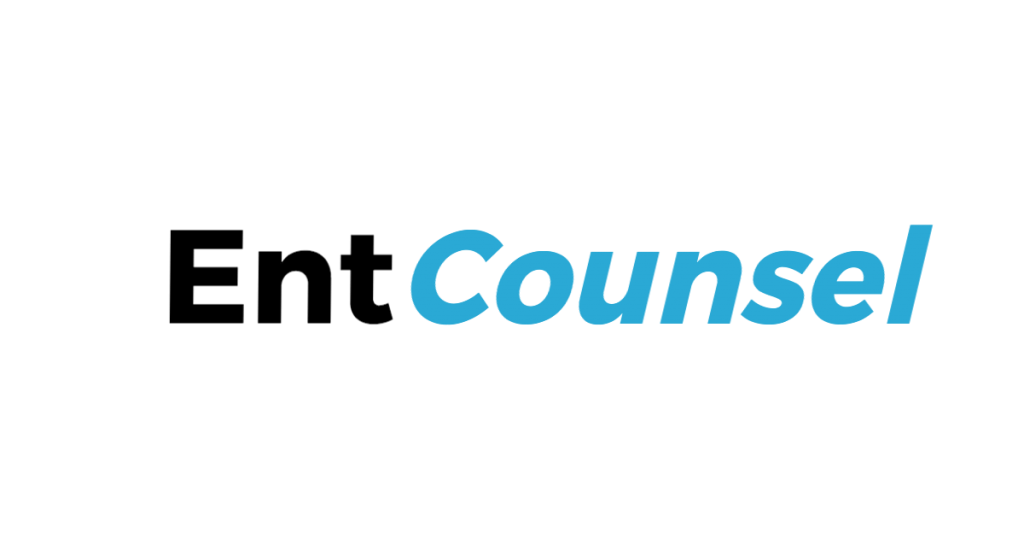What is Intellectual Property? As an intellectual property lawyer that has mentored hundreds of companies, I wrote this guide to help startups So that they have the knowledge to know how to protect your creations and inventions. Intellectual property are original creative works (literary, artistic or scientific) that can be reduced to a tangible form that can be legally protected. They include copyrights, patents, trademarks, industrial design, know how, trade secrets and confidential information. They are intangible and invisible so it’s easy for others to use, reproduce, copy and steal.
It’s important for company’s to have strong branding and trademark and copyright and to protect and enforce its intellectual property through registration, maintenance and continued monitoring. This article will guide you through protecting and maintaining your intellectual property rights.
Intellectual Property rights are important for entrepreneurs as its provides a means to monetize your ideas, creations and inventions by giving you the right to exploit by selling, assigning or licensing.
Entrepreneurs should know how to formulate an IP strategy and know the essential elements of their intellectual property that they should be protecting . Working with a good intellectual property lawyer can help fine tune this. Intellectual Property has a significant impact on valuation of a company and investors first look to see that the intellectual property rights have been secured and maintained before deciding to invest in a company.
A Guide by an Intellectual Property Lawyer on IP.
Intellectual Property is the heart of any new business. Most startups, entrepreneurs, artists, business owners and founders put IP last because they are struggling with other issues and do not want to invest the money in protecting their intellectual property rights. IP is the most valuable asset of any business. Any deficiency in IP can affect an investor’s ability to invest in a company and business relationships in general. Many companies fail to protect their IP and pay for it later.
It is important for a company to not only register these rights, but control how the brand, trademarks and logos are being used in a contract with users so that their goodwill and reputation are protected. Furthermore, you want the use of your IP to be consistent with your company’s branding to help maintain intellectual property ownership of these assets.
A company’s branding, trademarks and logos help distinguish their products and services from others claiming to do the same or similar thing. They establish trust, reputation and brand recognition. A trademark helps determine that the entity they are doing business with are who they say they are.
Without proper trademarks in place, another entity could leverage off the reputation of a business divert customers to their business instead.
Similarly, without copyright protection, a third party could copy the company’s original works, ideas that have been put in a fixed form, content, creations, assets such as website, artwork, photos and marketing materials to run similar initiatives.
Entrepreneurs should know what ideas, creations and inventions they can protect and how to go about doing so to give their company leverage and attract investors and customers. If they don’t, contacting an intellectual property lawyer is a smart decision.
Types of Intellectual Property Rights
Intellectual property is any form of knowledge or expression created partly or wholly with one’s intellect and which can be legally protected. I t is the product of the act of creation, and protect literary, artistic or scientific works such as an invention, a piece of writing, a painting, a design, a piece of music, etc.
An invention is any product of the human intellect that is unique, novel, and non-obvious to a person skilled in the field of invention. Individuals and/or institutions can own the products of their creativity and innovation in the same. An invention is a creation of the human intellect that is unique, novel and non-obvious.
There are two classes of intellectual property rights. There are “hard” intellectual property rights such as patents, trademarks, industrial designs, and copyright which are protected by legislation. There are also “soft” intellectual property rights such as confidential information, trade secrets and “know how” which are not protected by legislation but are still intangible rights.
When intellectual property is licensed, a royalty or licence fee agreements outlines the rights and obligations of each party. An owner of IP can control and receive payment for its use.
A company’s most valuable assets are its intellectual property. A third party using the company’s assets may end up owning those rights if they are using them in commerce and the company hasn’t protected their IP rights and isn’t using them. Examples of a company’s IP intellectual property may include:
Patents – are new and useful inventions (product, composition, machine, process) or any new and useful improvement of an existing invention according to the Canadian Intellectual Property Office (CIPO). A company’s patents may include:
- inventions
- processes
- discoveries
- formulas
- Inventions
- Business methods
- Industrial process
- Chemical formulas
- Drugs
- Generically engineered organisms
Patents are unique inventions, designs or processes. It gives the owner the exclusive right to manufacture, use and sell the invention (and prevent others from doing so). You will need an intellectual property lawyer to help you navigate Patents but it’s good to have some knowledge so you can work more effectively with your patent lawyer. Patents provide the most exclusivity & protection for 20 years from the filing of the application. Patents must meet four requirements:
- Patentable subject matter (any new and useful art, process, machine, manufacture or composition of matter or improvement)
- Novelty (must not be disclosed prior to filing date of application (if by third party) or prior to one year before the filing date of the application (if disclosure by inventor).
- Non-obviousness (inventive ingenuity)
- Utility (functional purpose)
The following article by Don Cameron is a great patent law primer. He teaches patents and trade secrets law at The University of Toronto.
Trademarks – is one or a combination of words, sounds or designs used to distinguish the wares (goods) and/or services of one brand from another according to CIPO. Trademarks establish brand identity, goodwill and reputation. A company’s trademarks and logo helps distinguish it from others claiming to do the same or similar thing. They establish trust and brand recognition.
A strong trademark and logo also communicates branding and personality. A trademark helps determine that the entity they are doing business with are who they say they are. Without proper trademarks in place, another entity could leverage off the reputation of a business and pretend they are that business or somehow related by using a business name and brand to inadvertently or even fraudulently divert customers.
Trademarks are what businesses use to identify and distinguish what they offer in the market from others (includes brands, logos, slogans and tag lines). It gives the owner the exclusive right to the use of the trademark in Canada in respect of the wares/services associated with it and prevent others from using the same or confusingly similar mark. They include words, designs, symbols, colours, fragrances or “get-up” of package of product.
Trademarks include:
- brands
- tag lines
- slogans
- logos
- names of products/services
- unique names
You can read more at What Is a Trademark.
Designs – of the whole or a part of a product resulting from the features of, in particular, the lines, contours, colours, shape, texture, or materials of the product itself or its ornamentation such as protecting industrial designs; and,
Copyright – provides protection and the exclusive use for original literary, artistic, dramatic or musical works (including computer programs) and performer’s performances, sound recordings and communication signals.
In addition, moral rights are the author’s right to integrity of the creation in its original form, to attribution, and to prevention of associations with the author’s creation.
Similarly, without copyright protection, a third party could copy the company’s content, creations, assets such as website, artwork, photos, film, multimedia works and marketing materials to run similar initiatives. Copyright are creative works of expression such as artwork, etc. It gives the owner the sole right to produce or reproduce the protected work.
Copyright can subsist in original literary, artistic, musical or dramatic work. Copyright includes the following rights (which may be licensed individually or bundled):
- Perform the work in public
- Publish the work, if unpublished
- Produce, reproduce, perform or publish any translation of the work
- Convert a dramatic work into a novel or other non-dramatic work;
- Convert any non-dramatic work into a dramatic work by way of performance in public or otherwise;
- Make a sound recording, cinematograph film or other contrivance by means of which a literary, dramatic or musical work can be mechanically reproduced or performed;
A company’s copyright protected works may include:
- logos
- marketing
- manuals
- plans
- strategies
- research
- development papers
- source code
- website
- videos
- marketing materials
- music
- publications
- presentations
- sales brochures
- newsletters
- Ideas that can be documented
- Artistic expression or literary creation
You can read more on our article What is Copyright?
Trade secrets
Trade secrets are business secrets that are proprietary to the company and not easily known or available to others. An example would be as a company’s unique selling techniques. If you’re uncertain if you have a trade secret, consulting with an intellectual property lawyer will help.
It is important to protect a company’s intellectual property rights for the purposes of brand protecting, marketing and legal protections to prevent infringement. It is also important for a company to not only register these rights, but control how the trademarks and logos are being used to maintain intellectual property ownership of these assets.
Integrated Circuit Topographies – are three dimensional configurations of electronic circuits embodied in integrated circuit products or layout designs according to CIPO.
Why Are IP Rights Important?
- Competitive Advantage – important for founders to offer something unique and different in the competitive marketplace of startups coming up with ideas every second.
- Exclusive Use – Copyright, trademark and patent registrations protects you from others using your names, creations and inventions. IP owners can prevent others from using their IP without their permission or a payment of a fee.
- Additional Source of Revenue through Licensing – companies can earn additional revenues through licensing.
- Protection Against Infringement – competitors are less likely to compete or steal your creations, ideas and IP if you have protected them.
- Trade Secrets & Confidential Information – If your business process if not protected by IP, you can still gain a competitive advantage by protecting your trade secrets and confidential information
Contact an Intellectual Property Lawyer
Contact your intellectual property lawyer for more tailored advice to your situation.
©Vandana Taxali, 2018. All right reserved.



